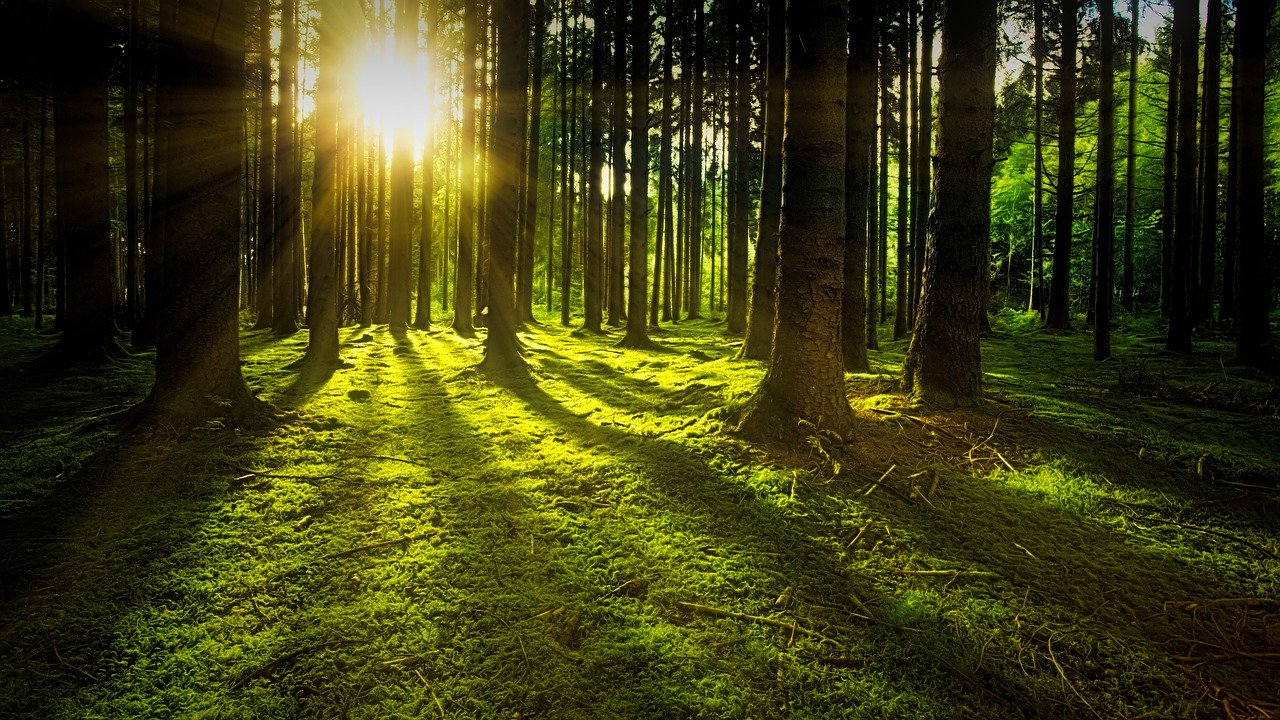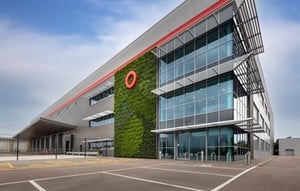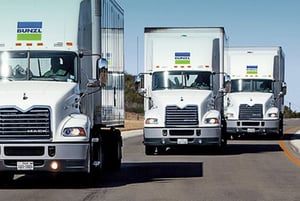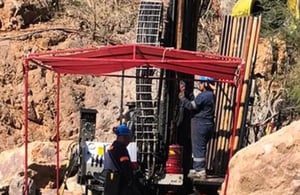Gresham House plc (LON:GHE) Managing Director of Forestry Olly Hughes caught up with DirectorsTalk for an exclusive interview to discuss the key merits of forestry as an asset class, why you would invest in UK commercial forestry, environmental and sustainable attributes of forestry, COVID-19 impact, outlook for global timber demand and how investors can access forestry in the UK for their investment portfolio.
Q1: Olly, forestry has featured a lot in the investment media just lately, what would you say are the key merits of forestry as an asset class?
A1: Well, forestry is a relatively unknown asset class in the UK and hasn’t really registered on a lot of people’s radar, but it is a very strong asset class, which we here at Gresham House has been managing a portfolio for some 30 years plus.
One of the significant benefits of forestry investment is, it’s quite obvious but often under looked, owning trees every year there is a natural growth in that tree in a commercial forestry plantation, which is the majority of our portfolio, every year you might have 2.5% natural growth of the tree, so you just sit and wait and your asset will grow naturally. When you align that with the security of owning the underlying freehold land and you set it against continuous cash flow from timber harvesting, it makes a very compelling investment.
More recently, we have seen a strong increase in interest in forestry from an environmental perspective as well, obviously, tree planting and forestry are a strong driver for carbon sequestration, which is high on the agenda for a wide variety of investors and so those are the core drivers. Obviously, you set that against what are the alternatives, and ultimately forestry show that a strong lack of correlation to traditional asset classes, such as equities and bonds, there is a good correlation to inflation and there is a strong environmental, social, and governance credential.
So, when you set that against average returns over the last 10 to 20 years of 10% plus over the last 10 years of 15% plus, we see this is as a very strong and relevant asset class for today.
Q2: So why would somebody invest specifically in UK commercial forestry?
A2: The forestry sector in the UK is relatively small compared to the global asset class as a whole or global sector as a whole, but there are some very relevant factors in the UK. One factor is that the UK imports over 80% of its timber consumption currently, the UK is a very good country for growing commercial timber, the Sitka spruce species being the major form of that and so while we have a very strong demand and we have a very good environment, we have a relatively small sector. So, that results in there being a good value and a strong underlying value for forestry, and it’s shown an exceptional resilience in the last few months accordingly.
Additionally, over the last decade, we’ve seen over a billion pounds of capital spent in the processing sector, so by that I mean the mills and the board manufacturers, which is obviously a strong pull through for locally grown timber. So, while pricing and value is high in the UK, we see that is supported by good processing sector, a very strong demand, and so a very relevant sector and a very relevant Sterling asset to hold.
Q3: Now, you touched on this earlier, what can you tell us about the environmental and sustainable attributes of forestry?
A3: Well, first and foremost, forestry and tree planting, they provide a critical and important source of carbon capture and lock up and obviously the recent elections, the relevance of tree planting was very high. It should be importantly noted that when a tree is cut down, especially at a commercial plantation tree, that timber doesn’t disappear, the carbon doesn’t get back into the atmosphere, or not all of it, and it is processed into fencing, into small equipment, and most importantly, timber for construction. One of the biggest drivers of timber should be that is increasingly being used as an alternative for in construction replacing carbon intensive concrete and steel and we’re seeing increasingly large numbers of buildings being predominantly made out of timber and timber derived product.
So, number one, it’s really a critical source of carbon capture and an aid to decarbonizing our economy but there are other benefits over and above carbon sequestration, and there are a wide array of environmental, social, and governance benefits.
So, there’s the jobs and the processing around the plantation, there is the natural habitat and ecology development, and often maligned, but even in the large commercial plantations under modern planting regimes, there’s the strong species diversification and development.
More recently, we’re starting to see really the benefits of forestry from a water control and purification perspective, in terms of flood avoidance and flood management and water table management.
So, there’s a huge array of environmental and sustainable attributes, which are really now starting to be picked up by investors, over and above the basic return of the forestry asset itself.
Q4: Has there been any impact from the COVID-19 pandemic?
A4: Of course, there has been an impact across the sector, but we’ve been really, really pleased and delighted to see that forestry has demonstrated its definitive qualities over the last six to eight months. Because it has been an essential sector, we have continued to harvest, we’ve continued to operate our forest, and manage and maintain our forest over that period, we’ve been continuing to cut timber and supply for pallets and for cardboard and for construction purposes.
Also, what we have seen, which is probably slightly counter, and this goes back to my previous statement of there being no real correlation to other markets, we’ve seen very strong demand for forestry and forestry assets over the last two months because people have been looking for alternative specialist, real asset investments that are delivering long term value retention and yield.
So, actually, we’ve seen some significant yield compression in the forestry sector, and rather than a fall in forest value, we’ve seen quite a significant rise in forest value. So, we’ve been delighted with the outcome for us, but obviously that’s set against the long term issues of how the economy will respond and how we look forward so we’ve been very lucky, but at the same time it has demonstrated the definitive qualities of forest asset value.
Q5: Now, as the UK’s largest forestry investment manager, what’s Gresham House’s view on the outlook for global timber demand, and perhaps a supply over the next 10 years?
A5: Obviously, we just talked about that UK at the moment but a lot of those factors that I’ve mentioned previously have huge relevance to the global markets.
We’ve just recently issued our Global Timber Outlook, but in summary, what we’re seeing is that there will be a significant increase in demand for timber and timber product over the next 30 years. We’re forecasting that demand to increase nearly threefold over that period, which is a 3% plus demand increase per annum and that is being driven by three core global mega trends, as we would call them.
One is an increasing urbanization of the global population so while an increasing population is obviously significant, the real significant factor is the urbanisation of that population. You can look at statistics such as in China, for example, the last 20 years, the population has increased and urban population has increased by around 96%, and consequent timber demand has increased by 96%. So, you will see as the global population urbanises more, it requires more housing and more construction, then you will see an increase in demand.
Secondarily, obviously, we talked about decarbonization and the replacement of steel and concrete for timber.
Thirdly, it’s just general house building, is a strong demand and drive of timber, and so we see a significant increase in demand.
That is set against a constraint in the sustainable ongoing supply of timber. If you imagine a tree, even in the UK in prime conditions, a Sitka spruce will take 30 to 35 years to reach maturity, in dry and alternative climates and different species, that cycle might be 100 years to grow to maturity. So, what we’re seeing over that similar period of significant increased demand is also a constrained supply, and so we see the underlying value of forestry and timber looking very positive for the next few decades as demand increases and supply remains stable and static.
Q6: Finally, how can investors access forestry in the UK for their investment portfolio?
A6: Well, you can of course go and buy your own forest, they come up for sale and you can buy one but the issue with that is that it requires a significant pool of capital to buy, a single forest, in the millions of pounds generally and actually, if you buy a single forest, you don’t get a diversification of geography, of age and potentially of species.
So, what Gresham House has made available to invest in is funds, and the form of these funds are that they’re generally non-listed LP structures which enable access to individuals to buy into a large portfolio of forestry, which will then enable them to benefit from immediate diversification and immediate access.
These funds generally deliver long term, consistent returns of in the region of 7%, and also benefit from a diversified age distribution across the portfolio, so we’re able to then provide annual cash distributions in those range, in the range of 2 to 3%.
So, there are a number of ways, but certainly in the UK, accessing a forestry fund such as that, we see as really a positive opportunity for investors to be able to access UK forestry.





































